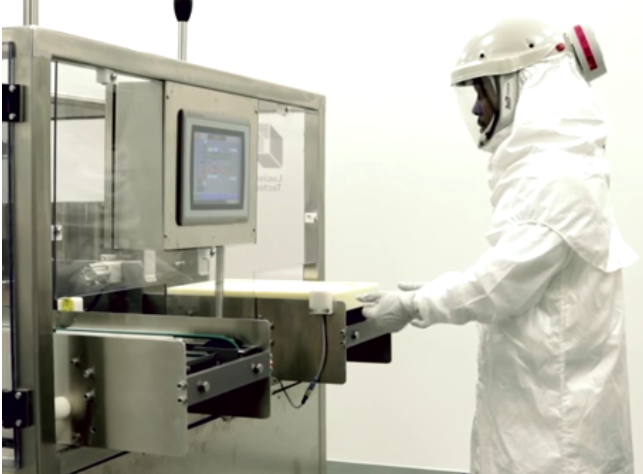
Photo credit: Aprecia
Excitement has been building regarding patient-specific, 3D printable drugs over the past few years (especially with the advent of the 3D printed epilepsy drug, SPRITAM). But what if we could all print out our own drugs or if your local doctor or pharmacy could do the same? Will we be a democratization in drug making through custom doses and shapes made not by pharma companies but by other players? It is, of course, doubtful that anyone will be churning out cold meds in the comfort of their homes next month, or even next year. This could be a different story, however, in the clinical setting—while it is interesting to see how much latitude big pharma allows the rest of us over time. The DIY crowd is resourceful for sure, and with all the correct tools, 3D printing your own prescriptions is already feasible.

Lab technician 3D printing SPRITAM (Photo: Aprecia)
3D printing affords a host of benefits in most cases, beginning with financial savings for the manufacturer and the consumer. Usually accompanying greater affordability is the option to innovate without being forced to rely on or wait on anyone else. Speed in production is a huge reason why industrial companies begin delving into 3D printing—and in the medical field, being able to produce patient-specific goods is a trend that can not only change lives but save them in some cases too. With the FDA currently on board—especially notable in the approval of SPRITAM and a tolerant nod to the processes behind creating it—there is potential for complication if they move forward to regulate.
FDA commissioner Scott Gottlieb was highlighted in recent news as saying they are:
“… working to establish a regulatory framework for how… [they] plan to apply existing laws and regulations that govern device manufacturing to non-traditional manufacturers like medical facilities and academic institutions that create 3D-printed personalized devices for specific patients they are treating.”

FDA commissioner Scott Gottlieb (Photo: FDA)
There is no mention of individuals taking on the task of 3D printing their own medications, however, there are of course a wide range of issues to address regarding such possible activity in the future. Considering all the safety measures that take place in a pharmacy alone, it is safe to assume that there would be strict limitations on what patients could fabricate themselves. And while the bigger picture is rife with concerns over what individuals may be printing and ingesting, there is also the side issue of regulation regarding design, software, and hardware used.
Speed in production, convenience, and the patient-specific aspect of 3D printing drugs all offer obvious and enormous benefit to the consumer, but affordability may not play its usual role as industrial 3D printers for medications could cost thousands of dollars. Even if there were a less expensive route for such a process, those hoping to 3D print medications in their own homes would most likely be forced to spend at least a few hundred dollars, bottom line, if the hardware were to become more ubiquitous. Pharmaceutical companies may find ways to create numerous roadblocks in this process, as well as taking over so much as to eliminate jobs for many pharmacists. There is also the question of how street dealers would infiltrate such technology and take advantage of it for dubious and criminal means.
Huge progress has been made though, and as more and more drugs are available for 3D printing, the road map for patient-specific medications—possibly produced by the patients themselves—should become clearer to us all. No matter what happens, it is highly unlikely that pharmaceutical companies will allow themselves to be on the losing end!
What do you think of this news? Let us know your thoughts! Join the discussion of this and other 3D printing topics at 3DPrintBoard.com.

Photo Credit: The Medical Futurist
Subscribe to Our Email Newsletter
Stay up-to-date on all the latest news from the 3D printing industry and receive information and offers from third party vendors.
Print Services
Upload your 3D Models and get them printed quickly and efficiently.
You May Also Like
Heating Up: 3D Systems’ Scott Green Discusses 3D Printing’s Potential in the Data Center Industry
The relentless rise of NVIDIA, the steadily increasing pledges of major private and public investments in national infrastructure projects around the world, and the general cultural obsession with AI have...
3DPOD 260: John Hart on VulcanForms, MIT, Desktop Metal and More
John Hart is a Professor at MIT; he´s also the director of the Laboratory for Manufacturing and Productivity as well as the director of the Center for Advanced Production Technologies....
Etsy Design Rule Change Reduces Selection of 3D Printed Goods
Online marketplace Etsy has implemented a rule change requiring all 3D printed goods on the site to be original designs. The update to the site’s Creativity Standards states, ¨Items produced using...
E-Beam OEM Wayland Additive Partners with USC Racing to 3D Print Titanium Exhaust Collector
Every year, standards organization SAE International holds a competition called Formula SAE, in which students from both undergraduate and graduate programs design, build, and race small formula-style race cars. For...

































